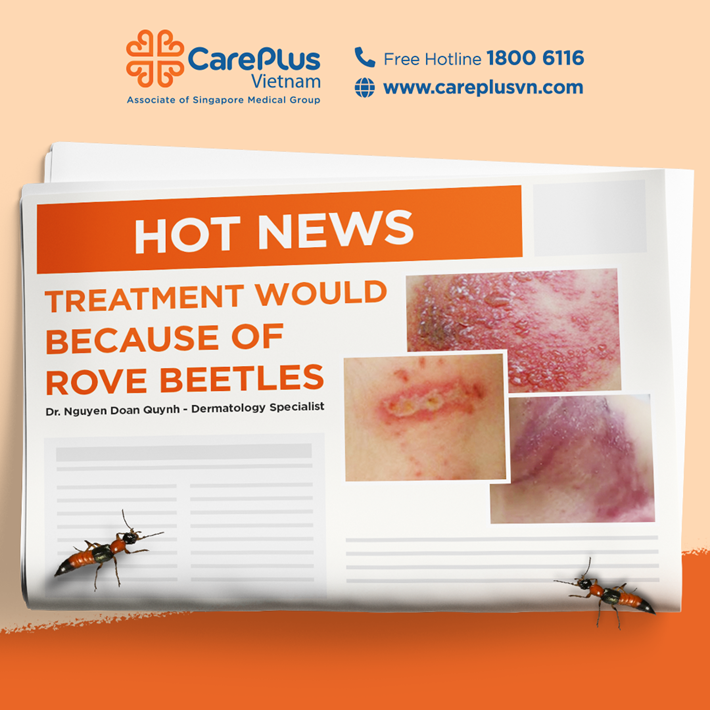TREATMENT WOULD BECAUSE OF ROVE BEETLES
The "Rove Beetle" has become the most talked-about pest during this changing season. Residents of apartment buildings and students living in dormitories have been particularly affected by these tiny invaders recently. So, what should you do to prevent skin inflammation caused by rove beetle bites, especially during this rainy season? And how should it be treated correct

9/9/2024 9:23:51 AM
How Do Rove Beetles Cause "Skin Inflammation"?
As the weather turns to autumn, after heavy rains, the damp environment often leads to an increase in cases of contact dermatitis caused by rove beetles. These insects are attracted to light at night and can fly high, making them likely to enter well-lit apartments on higher floors.
Unlike regular ants, when rove beetles attack, they cause "skin inflammation," which, if not treated properly, can lead to severe skin conditions, even infection and ulcers. The “bites” are due to contact with the beetle's secretions. The rove beetle's toxin, pederin, is a highly potent amide, 12 times more toxic than the venom of tropical snakes. This toxin causes the affected area to blister and burn for 1-3 weeks. Scratching can lead to infections, affecting health, and this danger applies to both adults and children.
These beetles don't typically attack humans but are likely to release their toxin when crushed against the skin or when rubbed off on clothing or towels. Therefore, do not crush or squash rove beetles as this will release their toxic fluid. Instead, use a tissue to gently capture and wrap them up before disposing of them in the trash.
How to Prevent Rove Beetle Bites?
Rove beetles are attracted to fluorescent lights, so the Department of Preventive Medicine recommends replacing these with yellow lights and avoiding standing directly under bright indoor lights. If you see a rove beetle under the light, keep your distance.
Dr. Nguyễn Đoan Quỳnh also suggests some preventive measures and tips for dealing with rove beetles in your home, in addition to maintaining a clean-living environment.
If you see a rove beetle on your skin or belongings, the best way to remove it is to gently blow it away to avoid any contact with its toxic secretions. Additionally, it’s a good idea to spray insecticides or set up traps around baseboards, balconies, windowsills, and doorways to keep rove beetles from entering your home.
Close your windows tightly in the evening, install screens, or draw curtains to block the light that attracts rove beetles.
What to Do If You Come into Contact with a Rove Beetle?
- Do not crush or squash the beetle to avoid spreading pederin onto your skin.
- If you find a rove beetle on your skin, gently blow it away or use a flat piece of paper to lift it off your skin before discarding it.
If you accidentally encounter a rove beetle, wash the affected area with clean water and mild soap. You can also apply a cool compress for about 15 minutes, then visit a healthcare facility for further treatment.
- If you discover a rove beetle in your clothes, towels, or other items, avoid direct contact with those items and wash them thoroughly to prevent the spread of pederin to your skin.
If you experience any of the symptoms mentioned, please schedule an appointment at CarePlus for early diagnosis and intervention from our experienced doctors and medical staff.